Part 148: Troubadour
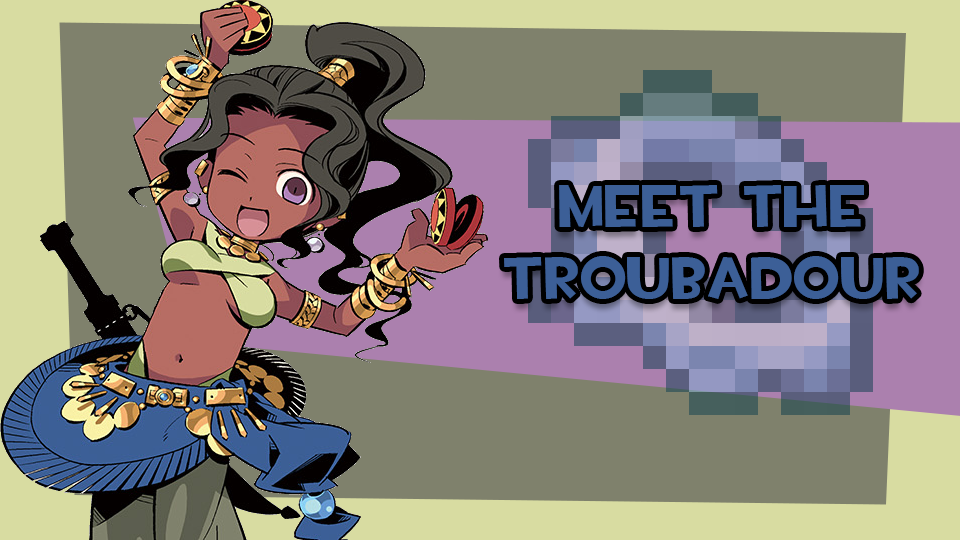

Troubadours, like most of the class roster, were introduced in EO1, and while they aren't in EO3 or EO4, Sovereigns and Dancers took up their roles of being buffing supports. In EO1, Troubadours were what you'd generally replace Alchemists with in the late and postgame, mostly because of Relaxing, which healed up a percentage of the party's TP every turn, effectively meaning that you could stay in the Labyrinth as long as you wanted. They were also useful for several postgame bosses there for varying reasons (one of which was because of a bug that meant a status ailment-inflicting and attack-debuffing skill only worked if the targets didn't have an attack buff). Admittedly, after casting their buffs, Troubadours didn't do much, since Song buffs lasted indefinitely in EO1 and 2. In EO2, Troubadours as a class weren't really nerfed directly (aside from the loss of Healing and Relaxing), but the loss of the Boost option (which increased any used skill's level by 5, even at levels 5-10) hurt them pretty badly. Several bosses in EO2 also tended to react badly to your party having an amount of buffs ranging from 15 (everyone in the party having a buff), to one boss that would basically cause a game over if you only had 5 buffs (just ONE Song).
Sovereigns in EO3 replaced Troubadours, with the primary change being that Orders were row-target, compared to Songs being all-target. While the Sovereign innate skillset was fantastic, the class it weren't that great due to Orders (aside from Protect Order) being stat-independent--which meant that most people just put a Sovereign subclass on a Monk (EO3's Medic equivalent) and ignored Sovereigns as a main class. Dancers in EO4 were a really weird class, and one that I never really figured out how to use effectively beyond just utilizing Attack Tango and trying to stun with Sword Dance and Mist Dance. Dancer buffs weren't placed on multiple characters, but were rather buffs placed on the Dancer themself that would give bonuses to allies in their row.
Troubadours then returned in EOU, and were a decent enough class. Song buffs are no longer indefinite, mirroring the changes brought about in EO3 and EO4, and they got Healing and Relaxing back (renamed Healing Lullaby and Peace Ballad, respectively), but Relaxing/Peace Ballad ate huge nerfs: the TP cost for the Troubadour was increased massively, the TP restoration is a static amount now, and the effect is no longer indefinite.
Troubadours got changed up a lot in EO2U, mostly through the Preludes becoming generic damage increases along with their old effects, and gaining the Ensemble skills, which give them something to do when they don't need to re-cast buff Songs. The absolute biggest changes to Troubadours, however, are the addition of the diminishing buffs system, and Crusade, both of which propel them into being one of the best choices for a support in a given party. The diminishing buffs system means that Troubadours, who can work around the system and provide multiple damage buffs through a variety of methods, are now considerably better at providing damage increases compared to other classes that provide buffs. Crusade is also part of how Troubadours work around said system--I'll come back to it later, though.
Stats:
Level 1:
HP: 27
TP: 50
STR: 4
TEC: 8
VIT: 6
AGI: 9
LUC: 8
Level 50:
HP: 196
TP: 368
STR: 18
TEC: 32
VIT: 29
AGI: 34
LUC: 30
Level 99:
HP: 472
TP: 690
STR: 35
TEC: 60
VIT: 55
AGI: 64
LUC: 56
Innate weapon choices:
 Swords,
Swords,  Bows,
Bows,  Staves
StavesInnate armor chocies:
 Light armor,
Light armor,  Clothes
ClothesCommon skills: HP Up, TP Up, Speed Up, Take
Troubadours are pretty average as far as stats go, STR and TP excepted-- they have the highest max TP pool out of any class, and their STR is only 5 points above Hexers, who have the worst STR. Bows are probably the best weapons you can put on them, since TEC (which staves tend to give) doesn't factor into any of their skills besides Life Ensemble, bows provide an action speed bonus to make them even quicker, and their above-average AGI means their auto-attacks aren't garbage.
Song Mastery
Requirements: None

Another mastery skill. This time, leveling it up reduces the TP costs of skills learned from Song Mastery, as well as increasing their speed modifiers. For the rest of the overview, note that TP costs listed will not count Song Mastery's TP cost reduction.
Song Mastery is one of the few mastery skills where I'd advise leveling it up over the active skills early on. The action speed increase is decent, although Troubadours are already naturally fast with their equipment choices and decent AGI, but the TP cost reduction is something Troubadours desperately need early on given how much TP their skills cost, even at lower levels.
Warrior Song
Requirements: Song Mastery level 1
Body parts used: Head
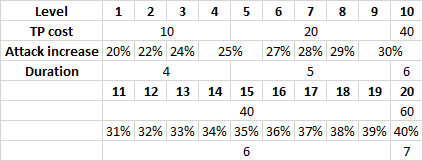
Gives each party member a physical/elemental attack buff. Does not affect untyped damage.
One of the most important skills in the Troubadour repertoire. Definitely something that should be maxed out as soon as your Troubadour has enough TP and Song Mastery levels to manage the TP cost at levels 5 and above.
Shelter Song
Requirements: Song Mastery level 1
Body parts used: Head
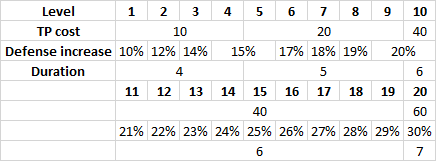
Gives each party member a physical/elemental defense buff. Does not affect to untyped damage.
Less important than Warrior Song, but can be useful, especially in combination with a Protector.
Energy Ensemble
Requirements: Warrior Song level 3, Shelter Song level 3
Body parts used: Head
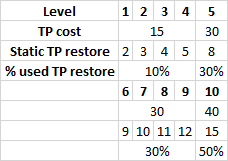
For one turn, when any party member with a song buff consumes TP, they will recover TP. The recovery amount is (base_amount + (used_tp * multiplier)).
The Ensembles exist to give Troubadours something to do when they don't need to be casting buffs or tossing out items, and Energy Ensemble is very useful. TP restoration is always handy, especially for classes with low max TP like Landsknechts and Ronin.
Lightfoot Melody
Requirements: Song Mastery level 3
Body parts used: Head
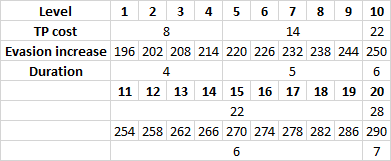
Gives each party member an evasion buff.
Useless. There are better uses of buff slots than evasion, especially given that Protectors and Beasts do a good enough job of keeping your party alive. Even if you don't have one, Lightfoot Melody is still a really bad investment aside from Skanda Ensemble.
Insight Melody
Requirements: Song Mastery level 3
Body parts used: Head

Gives each party member an accuracy buff.
Somehow even more useless than Lightfoot Melody. Pretty much no classes in EO2U after the very early game have issues with accuracy.
Skanda Ensemble
Requirements: Lightfoot Melody level 3, Insight Melody level 3
Body parts used: Head
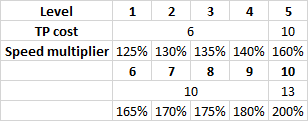
For one turn, increases the action speed of all party members with song buffs.
Skanda Ensemble, at higher levels, is basically Rise's Leader command from Persona Q that lets your entire party act before enemies, and is really useful as a result. It's not as overall useful as Energy Ensemble, but there's a lot of postgame bosses where having your party get their turns before enemies do is really goddamn useful.
Fire/Ice/Volt Prelude
Requirements: Song Mastery level 5
Body parts used: Head
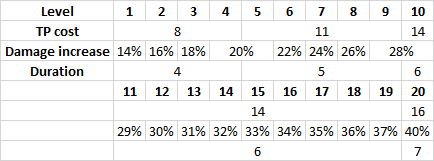
Gives one party member a generic damage buff, and adds an element to their normal attacks.
The Preludes, along with Crusade, are what propel Troubadours from "kinda useful" to "enablers of insane damage." You might be thinking "wait a minute, what about the diminishing buffs nerf?" That's the thing: the Preludes are generic damage buffs, not physical/elemental attack buffs. As a result, the game doesn't perform diminishing returns on them, meaning that they stack fully with Warrior Song and other attack buffs. They're also the only damage buffs aside from Crusade that affect untyped damage, due to being generic damage increases, but that's kind of a niche use since only one player skill and one Force Break are untyped damage.
Oh, and I guess the added normal attack elements part is situationally useful for getting conditional drops against enemies that nullify a specific element and also have a conditional drop tied to being killed with that element. That only comes up a grand total of four times throughout the entire game, though.
Flame/Frost/Shock Fantasia
Requirements: Fire/Ice/Volt Prelude level 5
Body parts used: Head
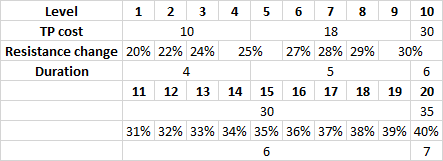
Gives each party member a buff that increases their resistance to Fire/Ice/Volt, and gives each enemy a debuff that reduces their resistance to Fire/Ice/Volt.
The increased resistance to an element for your party is nice, I guess, but the real draw of the Fantasias is the decreased resistance for enemies. These debuffs do not count as physical/elemental defense debuffs, meaning they are not subject to the diminishing buffs system when a buffed party member hits an enemy with the corresponding element.
The Fantasias are most useful when in a situation as described above: enemies that nullify an element but require being killed with it for a conditional, since most of their damage is likely tied to that element as well, meaning the resistance buff for your party comes in handy.
Barbaric March
Requirements: Song Mastery level 7
Body parts used: Head
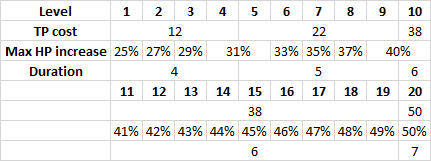
Gives each party member a buff that raises their max HP. Does not heal each party member to their new max HP.
Not a buff I value very much. Barbaric March has a use for one FOE later in the game, but it only needs to be level 1 to be useful. If you want to increase a Beast's HP to give them better tanking potential, there's better ways than using up a buff slot.
Life Ensemble
Requirements: Barbaric March level 3
Body parts used: Head
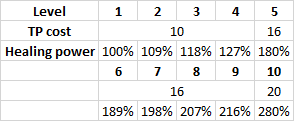
For one turn, whenever an ally with a song buff takes damage, for one time, they will be healed. The heal is dependent on the Troubadour's TEC/VIT.
Probably the least useful of the Ensembles. It only heals for one instance of damage, and the heal is pretty solidly always going to be mediocre--Troubadours have average TEC/VIT, which doesn't result in stellar healing.
Reverb
Requirements: Energy Ensemble level 3, Life Ensemble level 3
Body parts used: Head
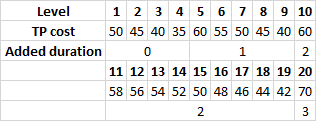
Copies one targeted ally's buffs to another targeted ally. From levels 5 on, Reverb also increases the duration of copied buffs on the recipient.
Reverb is a really weird skill that I didn't entirely get the point of at first. Most buffs in EO2U are multi-target, so what would the point of copying a single target's buffs to another target be? What I didn't think of, however, is that Reverb can be used to restore a party member's buffs after they are killed and revived, which is amazing. Getting a damage dealer back up and running after dying usually takes a few turns, but Reverb just throws that all out the window.
Health Requiem
Requirements: Song Mastery level 10
Body parts used: Head
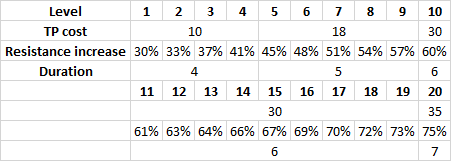
Gives each party member a buff that raises their resistance to status ailments and binds. Does not raise resistance to instant death.
Health Requiem is probably the most useless Song. I have used it in previous runs and, even at level 20, it barely does anything. It might prevent one person being tagged by an all-target ailment, which is absolute garbage. Don't touch this skill at all.
Alluring Ballad
Requirements: Speed Up level 3
Max level (innate): 10

Raises the encounter rate for a set amount of steps.
I have expressed my dislike for field skills in other class updates, and Alluring Ballad is no exception. I really don't see why you'd want to raise the encounter rate unless you're grinding, in which case just setting an auto-walk path and telling the game to make you always run in the Labyrinth is fast enough.
Jovial March
Requirements: Speed Up level 7
Max level (innate): 10
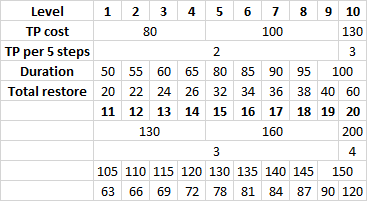
Restores the party's TP every 5 steps for a set amount of steps.
In a game with several useless field skills, Jovial March stands out. Not only is the TP cost absurd, even given Troubadours' high max TP, but it barely restores any TP relative to how many steps it takes to restore that TP.
Healing Rhythm
Requirements: HP Up level 5
Max level (innate): 10

If someone with Healing Rhythm has any buffs on them, they will be healed at the end of every turn. Uses the Healing Rhythm owner's TEC/VIT for healing.
A useless passive. Most classes outside of War Magi and Medics don't have the TEC/VIT to make Healing Rhythm worth having at all, and even outside of that, end-of-round healing is not worth a Grimoire slot on any class.
Holy Gift
Type: Passive
Requirements: TP Up level 10

Increases the EXP gained from battles. Has no effect on quest and mission EXP rewards.
I wouldn't invest in Holy Gift on an actual Troubadour, given the fact that if you get TP Up to level 10 when you should, it'll be in the postgame and you won't have a big need for more EXP. Holy Gift Grimoires, however, are probably the best way to speed up grinding--equip your grinding party with 5 level 10 Holy Gift Grimoires, drink the Yggdrasil Clover Tea, set an auto-walk path, and just watch the EXP come in.
War Song
Force Boost
Pauses the duration of all buffs on the party for 3 turns. Enemies become unable to dispel buffs on the party.
War Song is okay. Pausing the duration of buffs is nice, especially with crucial buffs like Compression, and preventing enemies from dispelling buffs is useful for some bosses.
Crusade
Force Break
Body parts used: Head
Activated at the start of the turn. Raises the party's outgoing damage and damage received by 50% each for one turn. Stacks fully with attack and defense buffs.
Crusade is possibly the most broken thing about Troubadours. The defense increase is nice, I suppose, but a flat 50% damage increase combined with Warrior Song and a Prelude results in some ludicrously huge numbers (for Etrian Odyssey, at least).